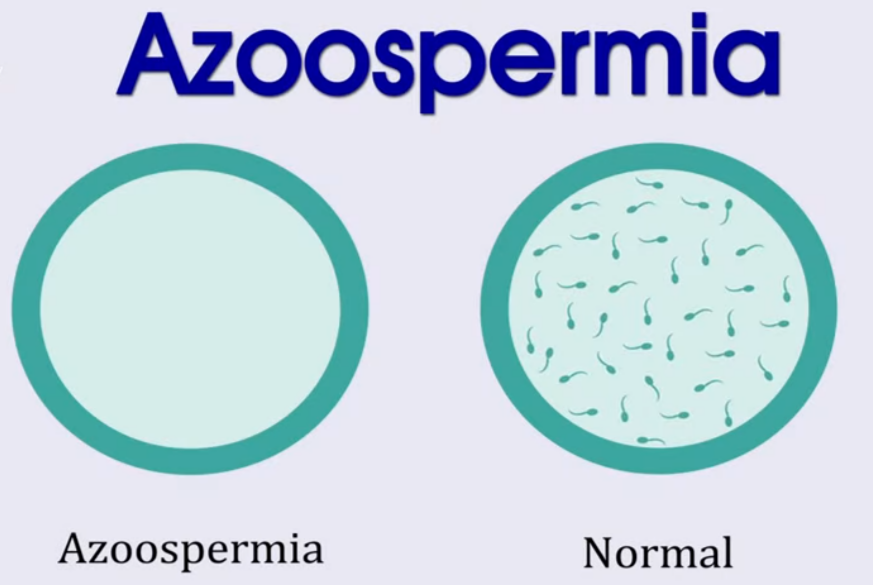Azoospermia is a condition characterized by the absence of sperm in the ejaculate. It is a significant cause of male infertility and can be classified into two main types: obstructive azoospermia and non-obstructive azoospermia. In this comprehensive article, we will delve into the symptoms, causes, diagnosis, and treatment options for azoospermia.
Symptoms of Azoospermia:
One of the hallmark symptoms of azoospermia is the absence of sperm in the ejaculate, which may be noticed when trying to conceive. However, since azoospermia itself is a symptom of an underlying issue, other symptoms may vary depending on the cause. These may include:
- Difficulty conceiving: Azoospermia is a leading cause of male infertility, and couples may experience challenges in achieving pregnancy.
- Hormonal imbalances: Some men with azoospermia may experience symptoms of hormonal imbalances, such as reduced facial or body hair growth, gynecomastia (enlarged breast tissue), or decreased libido.
- Testicular abnormalities: In some cases, physical abnormalities of the testicles may be present, such as small or undescended testicles.
- Sexual dysfunction: Azoospermia can sometimes be associated with erectile dysfunction or other sexual health issues.
It is important to note that not all men with azoospermia will experience noticeable symptoms, especially in cases of non-obstructive azoospermia where the underlying cause may be more subtle.
Causes of Azoospermia:
Azoospermia can arise from various factors, including:
- Obstructive causes: Obstructive azoospermia occurs when there is a blockage or obstruction in the male reproductive tract, preventing the release of sperm during ejaculation. Common causes include congenital conditions such as congenital absence of the vas deferens (CAVD), infection, previous surgery (e.g., vasectomy), or trauma.
- Non-obstructive causes: Non-obstructive azoospermia occurs due to problems with sperm production or maturation within the testes. This may result from hormonal imbalances, genetic factors (such as Klinefelter syndrome), testicular injury, radiation or chemotherapy treatment, or certain medications.
- Idiopathic causes: In some cases, the underlying cause of azoospermia may be unknown, despite thorough medical evaluation.
Diagnosis of Azoospermia:
Diagnosing azoospermia typically involves a comprehensive evaluation by a reproductive specialist or urologist. Diagnostic tests may include:
- Semen analysis: A semen sample is analyzed in a laboratory to determine the presence or absence of sperm. Multiple samples may be collected to confirm the diagnosis.
- Hormonal testing: Blood tests may be conducted to assess hormone levels, including follicle-stimulating hormone (FSH), luteinizing hormone (LH), testosterone, and others, to evaluate the functioning of the hypothalamic-pituitary-gonadal axis.
- Imaging studies: Imaging tests such as ultrasound may be performed to examine the male reproductive organs for any structural abnormalities or signs of obstruction.
- Genetic testing: Genetic screening may be recommended to identify any underlying genetic abnormalities that could contribute to azoospermia.
Treatment Options for Azoospermia:
The appropriate treatment for azoospermia depends on the underlying cause and may vary from one individual to another. Treatment options may include:
- Surgical intervention: In cases of obstructive azoospermia, surgical procedures such as vasectomy reversal or epididymal sperm aspiration (TESA) may be performed to retrieve sperm for use in assisted reproductive techniques such as in vitro fertilization (IVF) or intracytoplasmic sperm injection (ICSI).
- Hormonal therapy: Hormonal medications may be prescribed to correct imbalances that contribute to sperm production or maturation problems.
- Assisted reproductive techniques (ART): ART procedures such as IVF or ICSI may be recommended for men with non-obstructive azoospermia or when surgical sperm retrieval is unsuccessful. In these procedures, sperm retrieved from the testes or epididymis are used to fertilize eggs in a laboratory setting.
- Donor sperm: In cases where no sperm can be retrieved or if the male partner is not a candidate for ART, the use of donor sperm may be considered for fertility treatment.
- Lifestyle modifications: Making lifestyle changes such as quitting smoking, reducing alcohol consumption, maintaining a healthy weight, and managing stress can also improve fertility outcomes in some cases.
Conclusion:
Azoospermia is a complex condition that can have significant implications for male fertility. With advancements in reproductive medicine, various treatment options are available to help couples overcome infertility caused by azoospermia. Early diagnosis and personalized treatment plans tailored to the individual’s needs are essential for optimizing outcomes and achieving successful conception. If you or your partner are experiencing difficulties conceiving, seeking evaluation by a qualified healthcare provider is the first step towards addressing potential underlying issues and exploring appropriate treatment options.

